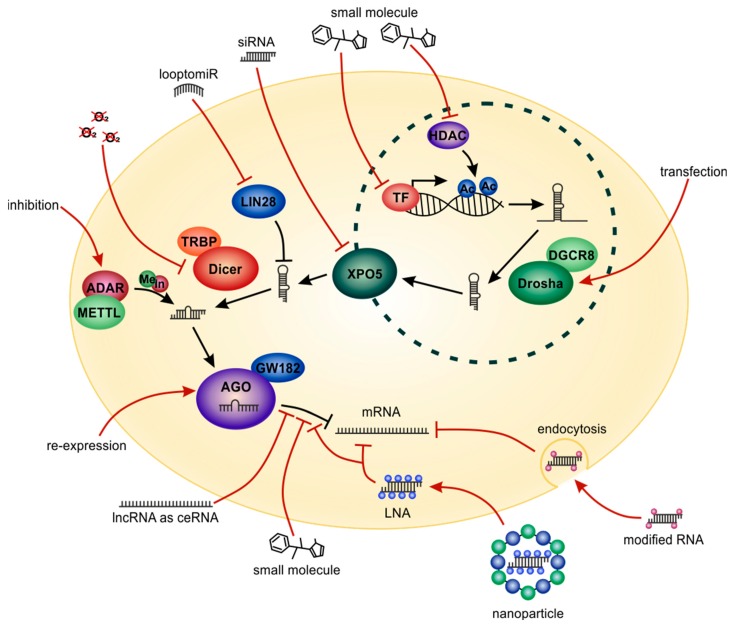Figure 9.
Potential ways to therapeutically target miRNAs and miRNA-related enzymes. Red arrows indicate multiple approaches for targeting miRNAs for therapeutic purposes. Small molecule targeting of epigenetic enzymes, for example, histone deacetylases (HDACs) or specific transcription factors (TF) can reactivate the expression of tumor-suppressive miRNAs [196,258,266,270]. Drosha expression could be induced or XPO5 expression could be inhibited by siRNA leading to induction or repression of tumorigenic miRNAs [271,272]. To inhibit binding of the negative regulator LIN28 to the tumor-suppressive miRNA let-7, short, loop-targeting “looptomiRs” can be used [273]. Targeting Dicer could be a potentially promising approach for specific tumor conditions such as hypoxia [274]. MiRNA modifying enzymes, such as ADAR or METTL, could also be approached by therapeutic strategies [261,262,263,264]. AGO is strongly downregulated in melanoma and re-expression could represent a therapeutic option [275,276]. The inhibitory effect of tumor-specific miRNAs on their target mRNAs could be inhibited by sequestering the miRNAs using, for example, lncRNAs as competing endogenous RNAs (ceRNAs) [277,278,279], by small-molecule inhibitors [280] or modified oligoribonucleotides (e.g., LNAs) [281]. Those can be specifically delivered into tumor cells using a nanoparticle based system [282]. Modified RNA molecules can also be taken up via endocytosis [33].

